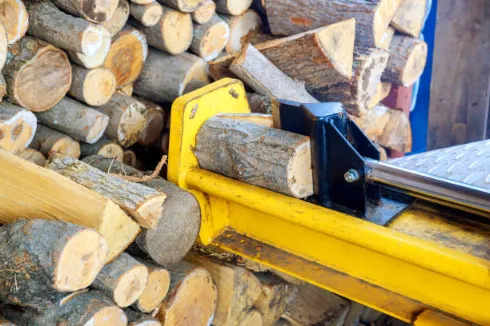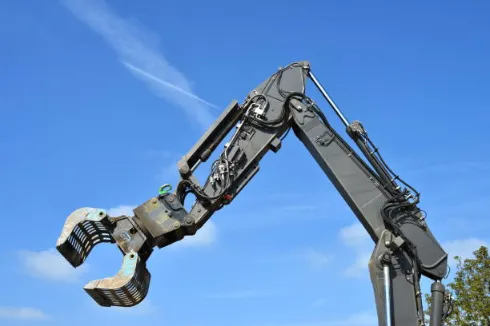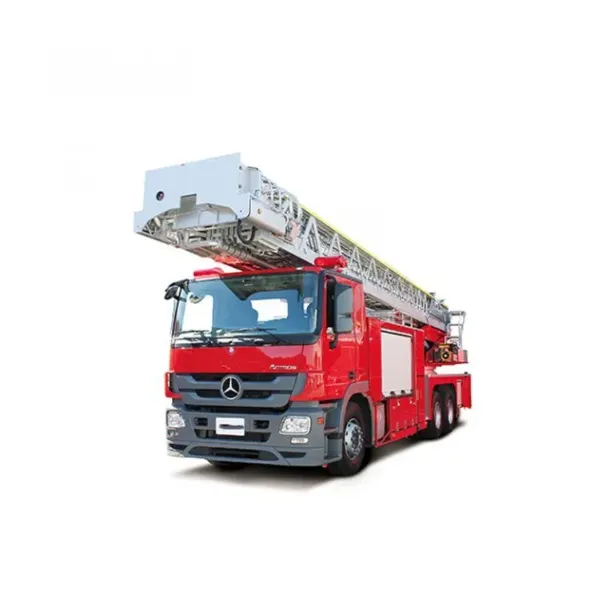Tools Required for Measuring a Hydraulic Cylinder
Essential Measuring Instruments
When you’re ready to figure out how to measure a hydraulic cylinder, you gotta have the right gear. Here’s what I always keep handy:
Digital or Vernier Calipers: These are great for checking how thick the rod is or how wide the barrel is inside.
Measuring Tape: Perfect for seeing how long the cylinder is when it’s all closed up or stretched out.
Straightedge or Ruler: This helps you make sure everything’s nice and straight, no wiggles.
Micrometer: This thing’s super fussy and gives you crazy exact sizes, especially if parts are old and worn. Having these tools means you’re gonna get measurements you can trust. That’s a big deal when you’re fixing or swapping out a cylinder.
Safety Equipment and Preparation Tips
Before you dive in, let’s talk safety. You don’t want to get hurt, right? Also, keep things clean. Grab some gloves and safety glasses to stay safe. Wipe that cylinder down real good to clear off dirt or slimy oil. Trust me, gunk can mess up your numbers. Make sure the machine’s totally off. Do those lockout/tagout steps so it doesn’t kick on while you’re poking around.
How Do You Measure a Hydraulic Cylinder: Core Principles
What to Know Before Starting the Measurement Process
It’s super helpful to get how a hydraulic cylinder does its thing. These babies are the muscle in lots of machines. They push and pull stuff with smooth, strong moves for all kinds of jobs, like lifting heavy farm gear. They’ve got parts like the barrel, piston, rod, seals, and the ends that hook it up. Depending on what you’re up to—fixing it, getting a new one, or making a custom job—you might measure some or all of those parts.
Factors That Affect Measurement Accuracy
A couple things can throw you off if you’re not paying attention:
Wear and Tear: Old cylinders might have rods that are bent or seals that are shot. That can make your measurements wonky.
Temperature: If it’s super hot or freezing cold, metal can stretch or shrink a tiny bit. Plus, crazy weather can beat up hydraulic systems over time.
Dirt: Grime or leftover gunk can stop your tools from sitting right on the cylinder.
Keep an eye on these when you’re learning how to measure a hydraulic cylinder, and you’ll save yourself some headaches.
Differences Between Measuring Single-Acting and Double-Acting Cylinders
Single-acting cylinders just push one way. Double-acting ones push and pull both ways, way more versatile. For single-acting ones, you mostly care about how far they move—that’s the stroke. For double-acting cylinders, you gotta think about the return stroke too, since it works both directions.
Step-by-Step Instructions to Measure a Hydraulic Cylinder
Step 1: Check Nameplate or Part Number Information
First off, hunt for a little tag on the cylinder. It’s like the cylinder’s ID card. It might tell you the bore size, stroke length, or model number. Having that info is like finding a shortcut—it helps you check if your measurements make sense later.
Step 2: How to Measure Hydraulic Cylinder Bore Size (Inner Diameter)
To check the bore size, which is the inside width of the barrel:
Grab your calipers and measure across the inside of the barrel. This number tells you how much power the cylinder’s packing.
Step 3: How to Measure Hydraulic Cylinder Rod Diameter
Get those calipers again. Measure the rod’s thickness where it’s fattest, usually right where it slides out of the cylinder. This makes sure the rod plays nice with seals and other parts.
Step 4: How to Measure Hydraulic Cylinder Retracted Length
When the cylinder’s all tucked in, measure from one mounting spot—like a pin hole—to the matching spot on the other end. This shows if it’ll fit in your machine when it’s chilling and not working.
Step 5: How to Measure Hydraulic Cylinder Extended Length
Now, pull that rod out as far as it’ll go. Measure from one mounting spot to the other again. This is how long the cylinder gets when it’s doing its thing.
Step 6: How to Measure Hydraulic Cylinder Stroke Length
To find the stroke length, do a little math: Stroke = Extended Length – Retracted Length The stroke is how far your machine can move with the cylinder’s help. Pretty cool, right?
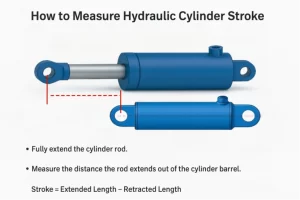
Step 7: How to Measure Hydraulic Cylinder Mounting Dimensions
Check out what kind of mounts your cylinder’s got. Could be clevis, flange, or trunnion mounts. Then measure:
How wide the mounting part is.
The distance between pin centers, if there are pins. These numbers make sure the cylinder hooks up right when you stick it in the machine.
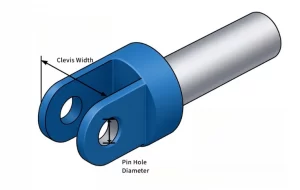
Common Mistakes When Measuring Hydraulic Cylinders
Misreading Measurement Points or Using Incorrect Tools
Using a tape measure for tiny parts like the rod is a bad move. It’s not exact enough. Calipers are your best buddy for small stuff. Make sure your tools are sitting flat on the cylinder. Don’t just eyeball it—being super precise is key when you’re figuring out how to measure a hydraulic cylinder.
Overlooking Wear or Deformation in Old Cylinders
Take a good look at the rod. See any scratches, dents, or bends? A bent rod can fool your measurements. Old seals might make the bore look bigger than it really is.
Tips for Ensuring Reliable Measurements Every Time
Double-Checking Results Before Ordering or Manufacturing Parts
Measure everything at least twice. If you’ve got another tool, use it to double-check. Compare your numbers with the manufacturer’s info, especially if you’re grabbing something like Shining Hydraulic’s Double Acting Welded Cylinders or Tie-Rod Cylinders. This keeps you from ordering something that doesn’t fit.
Recording Measurements with Proper Notation and Units
Scribble your measurements down nice and clear. Stick to one unit—like inches or millimeters—the whole time. If you know tolerances, write those too. It helps the folks making your parts get them perfect.
When to Consult a Professional for Hydraulic Cylinder Measurement Help
Situations That Require Expert Evaluation or Custom Engineering Support
If your cylinder’s dealing with super high pressure, funky mounts, or wild weather like blazing heat or icy cold, call in the pros. Yantai Shining Hydraulic Technology CO.,LTD Customization Service makes cylinders that fit your job exactly.
Frequently Asked Questions (FAQ)
What is the most important measurement when replacing a hydraulic cylinder?
The big ones are bore size, stroke length, rod diameter, and mounting type. Those decide if the cylinder’s gonna work right in your setup.
Can I measure a hydraulic cylinder without disassembling it?
You bet! You can measure stuff like retracted length, extended length, and rod diameter without breaking it open. But for bore size, you might need to crack it unless the tag spills the beans.
What happens if you get your measurements wrong?
Messing up can cause a mess. Your cylinder might act weak or even be dangerous. Seals could bust, or the whole system might crash. That means big repair bills. Nobody wants that.
Why does my old hydraulic cylinder seem shorter than spec?
Old cylinders get tired. Wear or bad seals can stop the rod from moving all the way. Check inside for busted parts. Keeping an eye on it regularly helps you catch this stuff early.
To find out how Shining Hydraulic can hook you up with custom or heavy-duty cylinders, like their Double Acting Welded Series, reach out today. Their crew’s got the know-how and awesome engineering skills to help you out.

